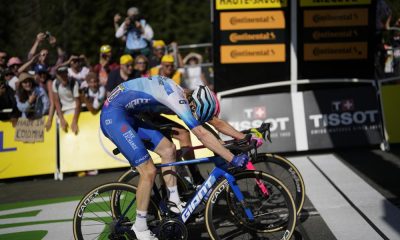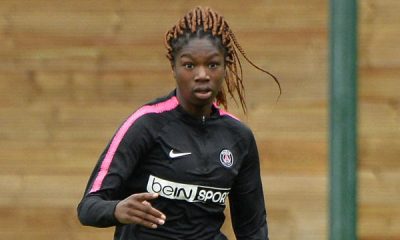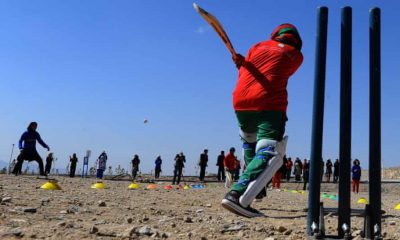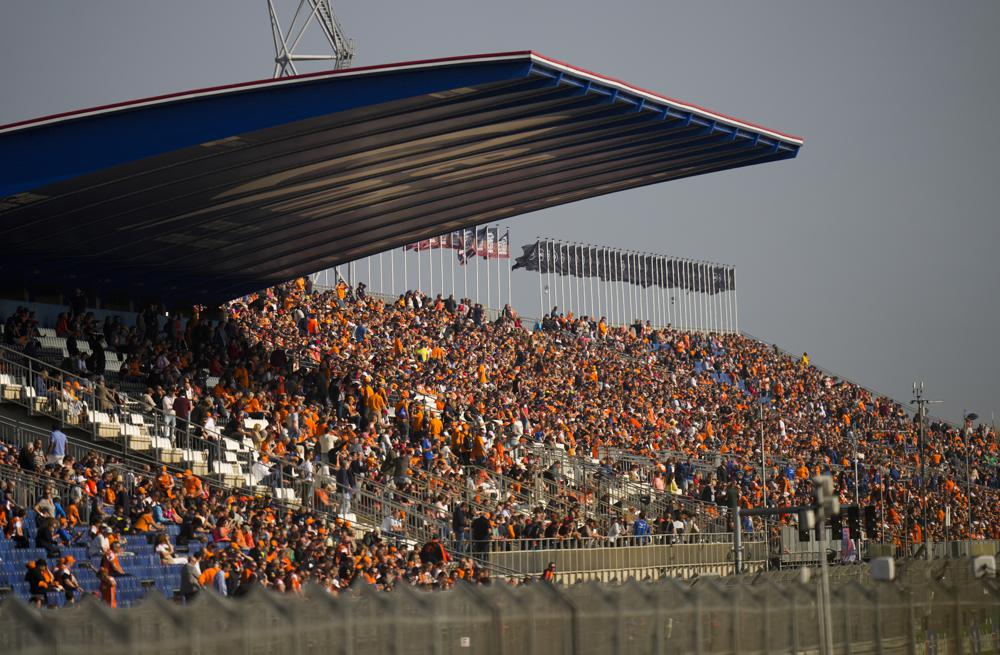Hundreds of racing enthusiasts in orange T-shirts spilled out when train doors slid open in the seaside town of Zandvoort.
Max Verstappen’s “Orange Army” of supporters had come.
At the best of times, they crowd the stands at the Austrian Grand Prix, where his Red Bull team competes, and Belgium’s Spa-Francorchamps circuit, which is close to where Verstappen was born and nurtured.
They are everywhere this weekend, as Formula One racing returns to Zandvoort for the first time since Niki Lauda won the last Dutch Grand Prix in 1985.
Two men in bright orange work overalls and a young girl in a regal cloak made of brilliant orange fake fur waited for their train to Zandvoort at a railway station in the Dutch city of Leiden.
At sporting events such as the Olympics and soccer World Cups, Dutch sports supporters are usually easy to find, dressed in orange — the royal family’s color — in three-piece suits, wooden shoes, and feather boas.
The 23-year-old Verstappen has yet to win a Formula One race, yet he must feel like royalty because the “Orange Army” follows him around in droves.
Perhaps with good reason, as Verstappen is one of the most impressively quick and fearless drivers to emerge in Formula One in many years.
At the age of 17, he became the youngest driver to compete in Formula One, and at the age of 18, he became the youngest driver to win, on a sensational debut for Red Bull that cemented his place as a future world champion.
Red Bull team principal Christian Horner remarked, “The degree of support he has is fantastic.”
But Lewis Hamilton is still alive, and Verstappen is doing everything he can to prevent the Mercedes driver from winning a record eighth Formula One championship, putting him one ahead of Michael Schumacher, who was formerly a teammate of Verstappen’s father, Jos.
Verstappen’s ardent fans are hopeful that their support will help him win on Sunday and return to the top of the Formula One drivers’ standings.
“It won’t be easy, but if he gets pole, he should win,” said Roger Seetsen, who traveled from Limburg’s southern region and spent the entire long weekend sleeping in the dunes near to Zandvoort’s hilly 4.3-kilometer (2.7-mile) track.
“There are just a few locations where you can overtake here, but Max should succeed with the help of all his fans,” Seetsen said as he ate a morning snack at a seashore seafood vendor.
The global coronavirus pandemic caused Dutch F1 fans to wait another year after 35 years without a home Grand Prix. Fans must have a corona pass to gain access to the facility, which is limited to 67 percent of the track’s capacity — around 65,000 fans per day — this year.
Despite the limitations, the town’s mayor, David Moolenburgh, was ecstatic about the global media spotlight on his 17,000-person town and the potential economic benefits for local companies.
“However, the happiness of the townspeople — the way they have embraced the race — is the most important to me,” he remarked.
Moolenburgh was absolutely correct.
Locals strung checkered flags from their windows on one long road leading from the train station to the track.
Residents packed the streets surrounding the track on Thursday, the day before the first practice. Some had tickets to stroll around it, while others patiently waited outside the gates until early evening in the hopes of seeing Verstappen and other drivers.
Environmentalists filed a succession of legal challenges to the race, with a judge dismissing a bid to halt the race only days before it took place.
Getting guests into and out of Zandvoort proved to be a logistical nightmare. Thousands of racegoers abandoned their automobiles in favor of the most Dutch means of transportation: the bicycle. Thousands of makeshift bike parking spots sprung up all around town.
Zandvoort is noted for allowing spectators to watch racing from the rolling sand dunes adjacent to the course. However, because to COVID-19 regulations, this was not possible this year, while several supporters were able to find a view point among the grassy dunes.
Elisabeth de Jong, a local resident, had her dune ticket revoked, but she wasn’t going to let that ruin her weekend.
She and her neighbors erected a white tent outside the racing track, adorning it with orange and checkered flags and a large Dutch flag bearing the words “MAX VERSTAPPEN” and the young Dutchman’s race number, 33.
As orange-clad supporters rushed past her front door, De Jong added, “It’s really amazing that he can race in his own country.”













